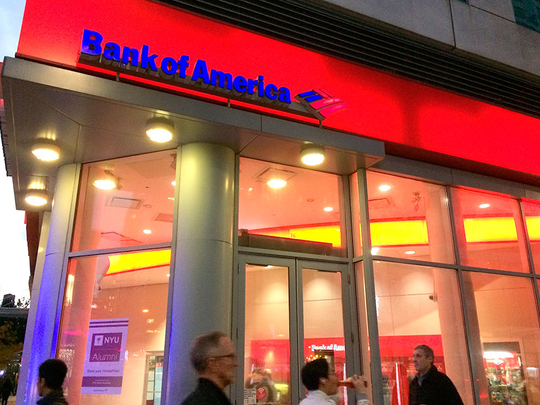
Bengaluru, New York: Bank of America reported a 34 per cent rise in first-quarter profit on Monday, topping Wall Street estimates, as the lender benefited from higher interest rates and growth in loans and deposits.
Revenue rose at three of BofA’s four major businesses. In consumer banking, its biggest business, revenue increased 9 per cent as higher interest rates helped BofA charge more for loans while keeping deposit rates low.
Profit also got a boost from Chief Executive Officer Brian Moynihan’s efforts to cut costs as well as lower tax expenses following President Donald Trump’s sweeping overhaul of the US tax code.
Shares of the second-largest US bank by assets rose 1 per cent in premarket trading. They have gained 33 per cent in the past 12 months, but fell about 3 per cent along with other US banks on Friday.
“Strong client activity, coupled with a growing global economy and solid US consumer activity, led to record quarterly earnings,” Moynihan said in a statement.
BofA’s net interest income rose 5 per cent in the first quarter, pushing total revenue up 4 per cent to $23.28 billion.
The lender relies heavily on higher interest rates to maximise profits as it has a large stock of deposits and rate-sensitive mortgage securities.
Total loans and leases rose 3 per cent, while total deposits increased 4.4 per cent.
The only business to record a fall in revenue was global banking, hurt by lower investment banking fees.
Non-interest expenses declined 1 per cent, while income tax expenses fell about 26 per cent.
The bank’s efficiency ratio, a closely watched measure of revenue divided by expenses, was 60 per cent in the first quarter, down from 63 per cent a year earlier. A low ratio indicates a bank is more efficient.
Jefferies analysts said BofA results looked best among peers that have reported so far.
The bank, however, underperformed in fixed income, currency and commodities (FICC) trading because of a decline in bond issuance from corporations, Chief Financial Officer Paul Donofrio said on a call with journalists. Less bond issuance can, in turn, affect credit trading in secondary markets.
Trading revenue was up only 1 per cent. Equities trading revenue, excluding items, rose 38 per cent, while revenue from trading fixed income fell 13 per cent.
BofA’s trading results mirrored those of rivals JPMorgan Chase & Co and Citigroup Inc. Revenue from stock trading rose at both the banks, but weakness in bond trading crimped total trading revenue growth.
Net income attributable to shareholders rose to $6.49 billion from $4.84 billion a year earlier.
— Reuters












